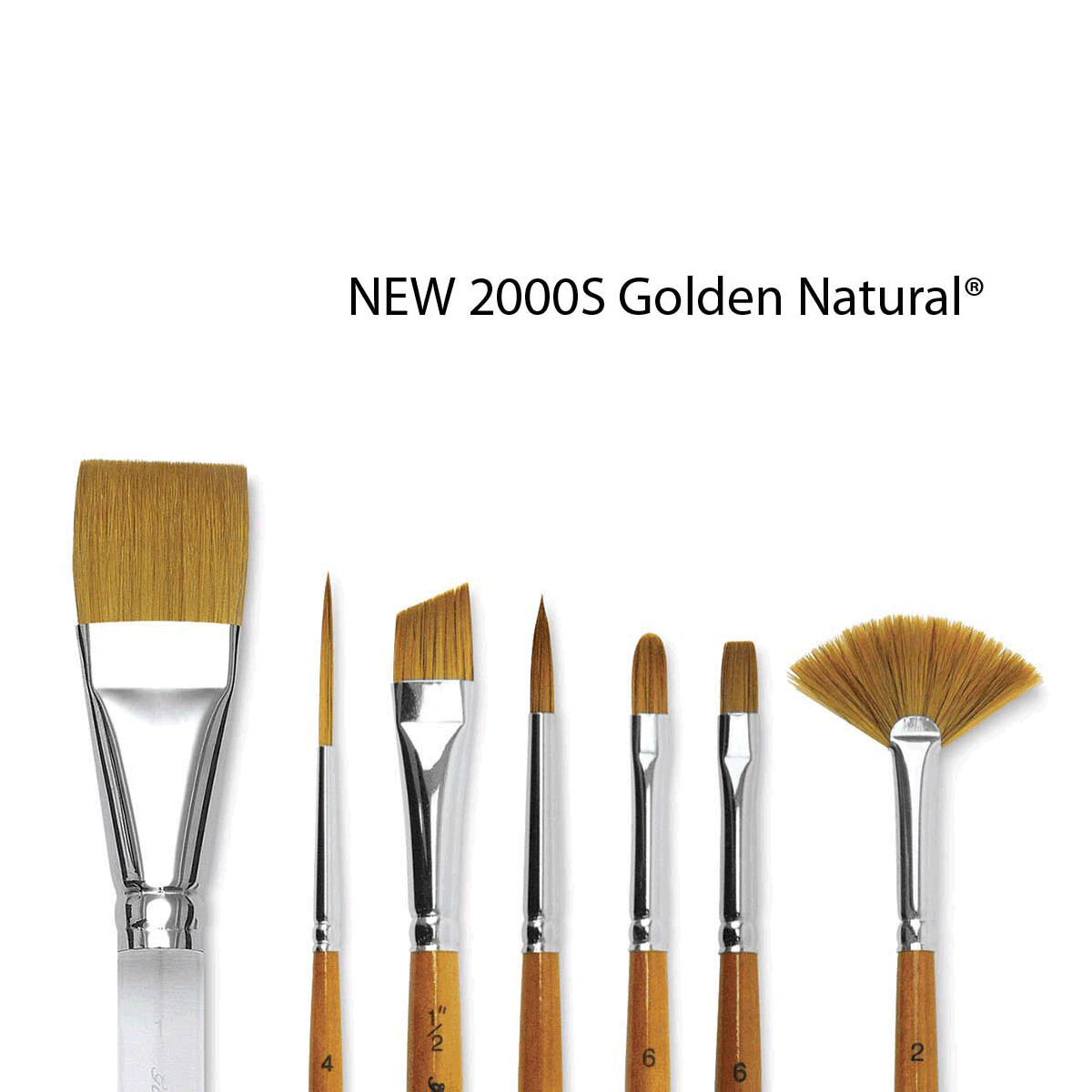Paint brushes come in various shapes that give you different marks. All brush shapes can be utilized with any medium, it is the hair type that ought to be viewed while picking a brush for a particular medium.
Flat
The Flat brush is long and rectangular shaped. They are characterized by a flat toe and can produce flat and chisel strokes. In addition, they can be used to build specified edges and guided lines. Often used for wide bold strokes, washes, filling wide spaces, and impasto. Edge can be used for fine straight edge lines and stripes. Large long-haired flat brushes can be used for varnishing.
Bright
Similar to flat brushes, bright bristle brushes feature a fat toe too. The difference is in the length of the bristles. They are shorter and are square shaped rather than rectangular. Sometimes referred to as a shader brush. Used for short controlled strokes with thick, heavy colour. Better for up close work.
Round
The most adaptable brush type is the round brush. Highlighting a round "toe", a round brush can create point by point, controlled imprints just as thicker ones. Used for sketching, outlining, detailed work, controlled washes, filling in small areas or edges. Creates thin to thick lines - thin at the tip, becoming wider when more pressure is applied on the brush. Best for thinned paint applications. Rounded points are great for fine details and lines, delicate areas, spotting and retouching. The shorter hair round brush length, shorter handle are used for details and short strokes.
Angled
As the name suggests, these kinds of brushes have an angled toe which can be utilized to produce flat or varied markings. A few artists use this brush to make flat lines. Tole painters use them for blending, shading, and double or triple loads. Used for curved strokes and filling corners. Tips can be used in small areas, and broad length to cover lots of space, similar to flat brushes.
Script/Rigger/Liner
A brush with numerous names has a very distinguishing effect on paintings. This kind of brush is long and thin used to mark controlled lines. Despite its slender shape, it can hold a considerable amount of paint. Rigger brush originally created as a specialty brush to paint the rigging lines on sailing vessels and ships, and evolved into a multipurpose brush, especially for landscape painting grasses, branches, fur, stems and leaf lines, etc.
Filbert
Filbert brushes have a curved toe, medium to long filament. Commonly used by acrylic and oil painters because it can handle large quantities of paint and can create a variety of marks on the painting surface. Commonly used as a blender brush, and to soften rounded edges like flower petals and portrait painting. Hog brush can be used for scumbling. Can be used as a combination of a round and flat brush; (side can be used for detail, while the flat side can cover more space than round).
Fan
Generally utilized for textural impacts, the fan brush includes a wide toe. For the most part, it is utilized to delicately "touch" the surface, as opposed to pulling out a stroke. Hog brush is great for creating textures. Natural softer hairs are good for smoothing, blending, and feathering. Synthetic filaments better for acrylic textural effects, clouds, and leaves on trees, use strong and sturdy filaments otherwise the hairs will clump when paint is added. Can use a softer fiber for fluid paint, gouache, watercolour and ink paints.
Mop
Mop brushes are large, round in shape and made from natural bristle, squirrel hair, or goat hair; known as a wash brush covering large areas in watercolour painting. These are incredible for spreading even washes of colours over a larger portion of the surface. Also used to dilute paint or in liquid colour similar to large flat brush. They contain the best natural fibers for carrying large amounts of water. Commonly utilized for watercolours, fluid acrylics, and inks. Useful tool for wetting surfaces, laying in large areas of water or colour, and for absorbing excess water or paint. Some even used them for soft blending that slightly softens edges in oil or acrylic painting.
Spotter
Used for extra control, a spotter brush is a small round brush with shorter bristles. They are often used as retouching brushes, and serve as the best brushes for minute detailing work.
Wash
These are broad flat brushes used for washes, base-coating, applying glazes and finishes. Additionally, can be used for large broad sweeping strokes for blending paint or soften marks.
Designers
This is an elongated round sable haired brush and is most common for illustration work.
Stripper or Lettering
This shape of the brush is known to give the thick-to-thin ribbon effect when pressure is varied. It is an adaptation of the sign painter’s pinstriping brush. It gives a long chiselled edge with long and fine lines. Some use it for calligraphy lettering.
Egbert
An egbert brush is an extra long filbert that can carry a good amount of paint and has an extra bounce. It can be used for some final, strategically placed marks of thick impasto.
The Golden Natural Brushes with short handles offers an extensive selection for oils, alkyds, acrylics & watercolours. Golden Natural duplicates the needle-sharp points and fine chisel edges of the best red sable... and at attractive prices! Shop for it at Kings.
Stay tuned to our next blog to know about Width Or Thickness Of The Bristles And The Length Of The Brush Handles.


























